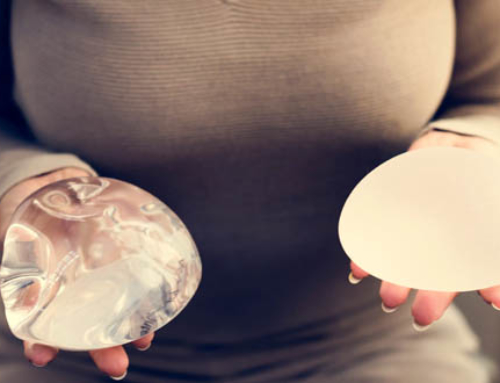Breast augmentation is a surgical procedure where implants are inserted behind the mammary gland through a discreet incision. Even though this procedure’s principle is always the same, many choices have to be made. Patients have to take the time to think about these choices before making their decisions. Here is more information about the different types of implants to help you choose depending on what you are expecting from your breast augmentation with implants.

Breast implants : choosing the filling material
Types of breast implants
Breast implants are made of a membrane (several layers of medical grade silicone) and a filling material.
Implants filled with saline (physiological serum)
Saline is simply sterile water with added salt. It is perfectly compatible with the body and naturally eliminated if the implant ruptures.
After it is positioned through the incision, the saline implant is filled until the desired volume is reached. One of the benefits of this type of implant is that leakage can only cause the breast to lose volume. Slight breast asymmetries can also be corrected by adjusting each implant’s volume accordingly.
However, saline implants can cause visible rippling in the skin in certain cases and its liquid texture can be felt under thin skin. Saline implants are not available in anatomical shapes since they would lose this shape.
Implants pre-filled with silicone gel
Silicone is polymerized in order for the implant to retain its shape after being positioned in the breast. Its cohesive nature limits the risk of silicone spreading in case the implant ruptures. When that happens, the implant can be safely removed surgically. Silicone gel offers multiple benefits, which is why it is the most common filling material for breast implants.
Silicone gel implants are more durable than saline implants. Their texture is more similar to natural breast tissue. Silicone gel is used to fill in anatomical implants, which retain their shape after the procedure. Silicone gel also limits the risk of visible rippling at the edge of the implant.






Laisser un commentaire